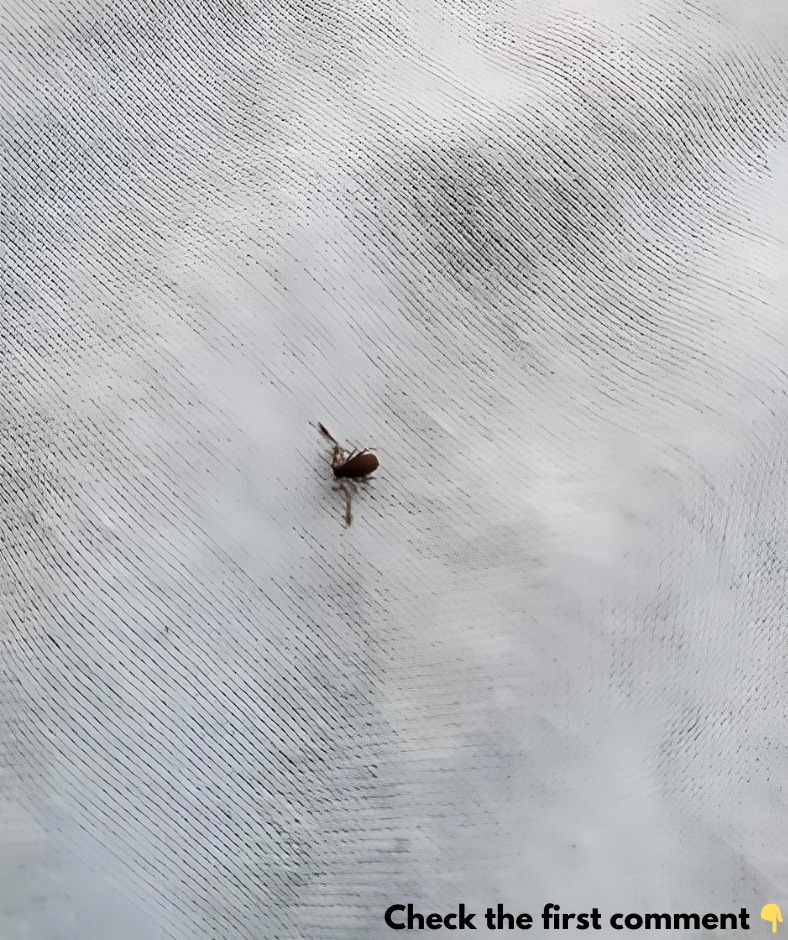Finding a tick inside your house can be an unsettling experience. These tiny, blood-sucking parasites pose potential health risks to both humans and pets, as they can transmit various diseases. Ticks often enter homes by hitching a ride on pets, clothing, or gear, and if left unchecked, they may start to multiply. Thankfully, there are several steps you can take to safely remove ticks from your home and prevent future infestations. Let’s explore the best approach to handling a tick in your home.

Understanding Ticks and How They Get Inside
What Are Ticks?
Ticks are small arachnids that feed on the blood of mammals, birds, and reptiles. Unlike insects, which have six legs, ticks have eight legs and two body segments. They are commonly found in wooded areas, tall grasses, or gardens. Ticks typically wait on vegetation until a host brushes against them, allowing them to latch on and begin feeding.
How Do Ticks Enter Your Home?
Ticks usually make their way indoors by attaching themselves to pets, people, or even clothing. Pets, especially those that spend time outdoors in grassy or wooded areas, are more likely to bring ticks inside. Additionally, ticks can latch onto shoes, backpacks, and other outdoor gear, making it easier for them to find their way into your living space.
Step-by-Step Guide to Handling a Tick in Your Home
If you discover a tick in your house, don’t panic. Follow these steps to safely remove the tick, clean the area, and reduce the risk of further infestation.
1. Identify the Tick Species
Before handling the tick, take a moment to identify it. Different species carry different risks, so it’s important to know which kind you’re dealing with. Common ticks found in the U.S. include:
- Deer ticks (black-legged ticks): Known for carrying Lyme disease.
- American dog ticks: Can transmit Rocky Mountain spotted fever.
- Lone star ticks: Associated with various illnesses and even a red meat allergy.
If you’re unsure about the type of tick, take a clear photo and consult a pest control expert or healthcare provider. Identifying the tick will help you determine if there are any health concerns.
2. Safely Remove the Tick
Once you’ve identified the tick, the next step is to remove it. Follow these steps for safe removal:
- Use fine-tipped tweezers or a tick removal tool to grasp the tick as close to the skin or surface as possible.
- Pull gently and steadily to avoid breaking the tick apart. Don’t twist or jerk the tick, as this can cause parts to remain embedded in the skin or fabric.
- Avoid squeezing or crushing the tick with your fingers, as this can release harmful pathogens.
3. Dispose of the Tick Properly
After removing the tick, it’s important to dispose of it safely. Here’s how to do it:
- Place the tick in a sealed plastic bag or small container. You can add rubbing alcohol to the container to ensure the tick is killed.
- Dispose of the sealed bag or container in an outdoor trash bin.
- Never crush the tick with your fingers, as this can expose you to harmful bacteria or viruses.
4. Clean the Area Thoroughly
Once the tick is removed, clean the area where you found it:
- Wash the area with soap and water to remove any contaminants.
- Disinfect the area using rubbing alcohol or hydrogen peroxide.
- If the tick was on a pet, inspect the spot on their skin and clean the area with a pet-safe antiseptic solution.
5. Check for Additional Ticks
Ticks are skilled at hiding, so there could be others nearby. Conduct a thorough inspection of your home to ensure no additional ticks are present:
- Examine carpets, bedding, and furniture, as ticks often hide in these areas.
- Check your pets by combing through their fur with a fine-toothed comb, especially around the ears, neck, and belly, where ticks commonly latch on.
- Consider using a lint roller over surfaces where ticks might hide to catch any you may have missed.
Preventing Future Tick Infestations
To keep ticks out of your home and minimize the risk of tick-borne illnesses, follow these preventive strategies:
1. Regular Tick Checks
After spending time outdoors, check yourself, your family members, and your pets for ticks. Conducting a quick check before coming inside can help prevent ticks from entering your home.
2. Keep Your Yard Tick-Free
Creating a tick-free environment in your yard can help prevent infestations:
- Trim tall grass, bushes, and shrubs where ticks commonly hide.
- Remove leaf litter and debris that can create a suitable habitat for ticks.
- Consider using tick-repellent products around your yard, especially in tick-prone areas.
3. Use Tick Prevention Products for Pets
Talk to your veterinarian about tick prevention treatments for your pets. Options include topical treatments, tick collars, and oral medications to protect your pets and reduce the likelihood of bringing ticks indoors.
4. Seal Entry Points
Seal any cracks or gaps in your home’s structure that may allow ticks to enter. Use weather-stripping and caulking around doors and windows to block potential entry points.
Why It’s Important to Act Quickly
Ticks pose significant health risks, as they can transmit diseases like Lyme disease, Rocky Mountain spotted fever, and tularemia. These illnesses can lead to symptoms such as fever, muscle aches, fatigue, and in some cases, long-term complications. Removing ticks quickly and taking steps to prevent future infestations can significantly reduce your risk of exposure to these diseases.
Conclusion: Keep Your Home Tick-Free
Finding a tick in your home can be alarming, but with the right approach, you can remove it safely and prevent further issues. Be sure to identify the tick, remove it carefully, clean the area, and inspect for additional ticks. By staying vigilant and following preventive measures, you can keep your home free of ticks and the potential health risks they bring. Keep your pets protected, regularly check your home, and maintain a yard environment that discourages ticks from entering. Following these steps will help you maintain a healthier, tick-free home.





